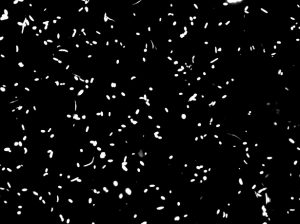In this post, Mirco Bundschuh highlights the results of their recent paper “Antibiotic mixture effects on growth of the leaf-shredding stream detritivore Gammarus fossarum”.
Antibiotics are a vital part of today’s medicine, mostly being used for treating bacterial infections. However, when released into aquatic ecosystems, these substances may affect microbial communities that are at the base of food webs and perform a range of fundamental ecosystem functions. As one essential function, microbial communities colonize organic material and thereby increase its nutritious quality for higher trophic levels. By affecting microbial communities, antibiotics may thus ultimately interfere with the entire interplay between bacteria and fungi during this colonization process.
In an earlier publication, we have shown that the palatability of microorganism-colonized leaf material, measured via the food selection behavior of leaf-shredding gammarids, is increased in presence of antibiotics relative to a scenario in which no chemical stress was applied. Based on this finding, it was assumed that organisms feeding on leaf material colonized in presence of antibiotics (at 2 and 200 µg/L) show higher growth relative to the control, whereas a simultaneous exposure to antibiotics via the water phase has only a limited impact.
In this present study, however, the antibiotics had no effect on abundance and biomass of the two most important microbial groups, namely bacteria and fungi. Nevertheless, modification of leaf quality through shifts in the fungal community composition may have triggered the observed faster growth of gammarids at 2 µg antibiotics/L. At the highest test concentration, gammarid growth was not stimulated, which might have been driven by a modified ability of the gut microflora to assimilate nutrients and carbon. Furthermore, the observed lack of an increase in the diameter of the gammarids’ peduncles, despite an increase in gammarid mass, suggests antibiotic-induced effects in the moulting cycle. Although the processes responsible for the observed effects have not yet been identified, these results indicate unexpected bottom-up directed effects of antibiotics in heterotrophic food webs that warrant further research.
The paper was authored by Mirco Bundschuh, Ralf Schulz and external collaborators and is published under the open access agreement in Ecotoxicology.
You may also be interested in:

